Hawaii, USA
Published by Chris Townsend
Last updated Dec, 13 2025

Affordable And Safe Moving Companies Hawaii
Hawaii is renowned for its breathtaking landscapes, from lush mountains to pristine beaches, and its vibrant culture, which is deeply rooted in traditions and the Aloha spirit. This unique blend of natural beauty and rich heritage makes Hawaii a highly sought-after destination for relocations. Whether you're moving to the bustling city of Honolulu or the tranquil shores of Maui, finding cheap moving services is essential for a smooth and stress-free transition.
The local lifestyle, characterized by a strong sense of community and the welcoming nature of its residents, plays a significant role in the moving experience. When searching for movers in this beautiful state, it’s important to consider not only the cost but also the reputation and reliability of the services offered. Embracing the island lifestyle means choosing movers who understand the unique challenges of relocating within Hawaii, ensuring that your move is handled with care and efficiency.
If you're looking for the right moving company in, Three Movers is the place to go. We are a widely renowned company with years of experience that provides outstanding services across the country, including in Hawaii. We offer quick and effective services that are certain to suit all of our customer's requirements, thereby relieving them of relocation stress. Our team of movers is well-trained and has a wealth of expertise. We're committed to giving our customers the best service possible and putting their minds at ease during their residential or business relocation.

Long-Distance Hauling Companies
Long-distance moving is the delivery of products from one location to another that is thousands of miles apart and requires crossing state borders. This takes a long time because the manner of transportation is by road, and the terrain can also make travel difficult. Three Movers is a long-distance moving company that provides affordable and high-quality services.
Local Movers in Hawaii
For those seeking personalized service, consider these three small moving companies that exclusively serve Hawaii. Each of these movers is committed to providing exceptional service tailored to the unique needs of island residents:
- Aloha Movers – Renowned for their friendly service and deep local expertise, Aloha Movers understands the nuances of moving within the islands. Their team is dedicated to ensuring that every item is handled with care, making them a favorite among locals who appreciate a personal touch in their moving experience.
- Island Moving Co. – Specializing in residential moves across Oahu, Island Moving Co. has built a solid reputation for reliability and efficiency. Their knowledgeable staff is well-versed in the logistics of island relocations, ensuring that your move is not only smooth but also tailored to fit your specific requirements.
- Maui Movers – Offering tailored packages for affordable island relocations, Maui Movers focuses on providing cost-effective solutions without compromising on quality. They pride themselves on their attention to detail and commitment to customer satisfaction, making them an excellent choice for those looking to move within Maui or to neighboring islands.
These companies embody the Aloha spirit, providing services that reflect the warmth and friendliness of Hawaii’s culture. By choosing local movers who are familiar with the unique challenges of island life, you can ensure a more seamless and enjoyable moving experience. Whether you're relocating your home or business, these small movers are equipped to meet your needs with professionalism and care.

Maui Affordable Moving Services
We offer the following services:
- Residential Moving
- Commercial Moving
- Local Moving
- Long Distance Moving
- International & Overseas Moving
- Military Moving
- Auto Transport
- Apartment movers Honolulu
- Apartment movers
- Storage
- Packing & Crating
- Furniture Moving Disassembly & Reassembly
- Container Moving
- Specialty Moving
- Moving Resources
- Office moving
- Moving Storage
- Cheap moving
Quality service is very important to us, as we care deeply about our customers.

What Cost To Expect?
We take into account the type of objects to be transported, their weight and heavy lifting, the distance the items must be transported, and the number of vehicles required to transport the selected items. We make every effort to price our clients reasonably.
How Prepared Is Three Movers To Work?
We are well prepared with a well-organized team of workers and well serviced vehicles to carry items and freight forwarding of customers without failure to the required destination.
Oahu Cheap Moving Solutions
Residential Movers In Hawaii
Residential movers facilitate your move from your old home to your new home. Whether it’s a local or long-distance move changing residences is normally a challenging task for most people. Luckily, with the residential moving services of Three Movers, you no longer have to feel worried about your move. Our professional crew of movers will help you plan and facilitate the shifting process. Aside from our services, other services you can expect from our professional movers include
- Packing and unpacking services
- Loading and unloading services
- Furniture disassembly and assembly services
- Storage services
- Auto-transport services
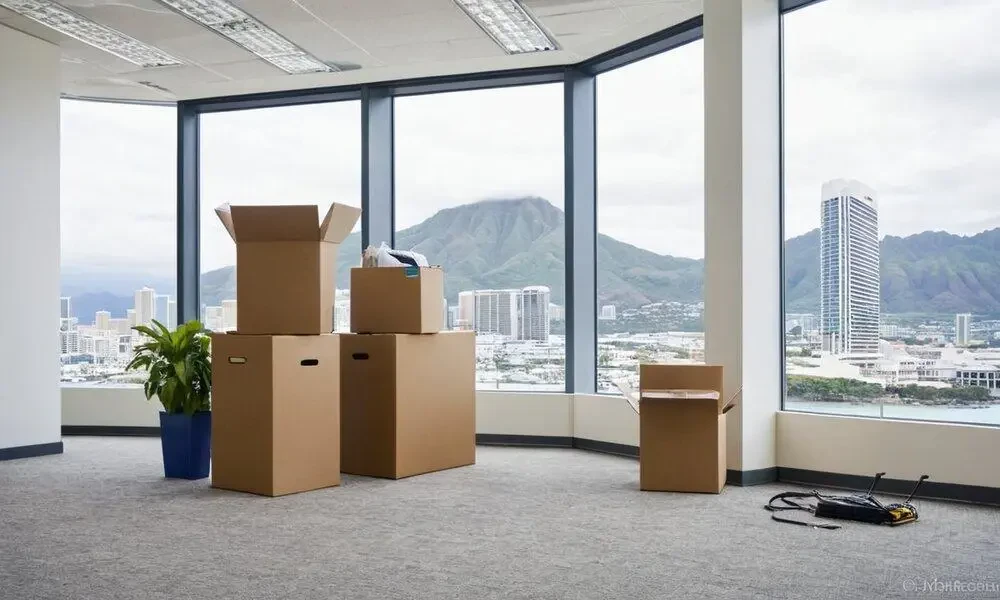
Office/ Commercial Shifters
Office/ commercial moves are considered to be non-residential moves. These moves have to be handled by professionals due to security issues, tight deadlines, and planning involved. To make it easier for you to plan your move, we provide our customers with dedicated corporate relocation managers.
Our relocating experts offer specialized commercial moving services to business owners across Hawaii. With our commercial hauling services, business owners get to enjoy
- Working with a fully certified and insured moving company
- Enhanced safety for their office equipment and supplies
- Working with an experienced crew that focuses on professionalism

Military Movers
Military servicemen and women get relocated to new stations regularly. Once they receive the permanent change of station (PCS) orders, in most cases, they have to move with their belongings to their new station. As a result, they require the services of a hauling company that can handle immediate moves.
Our military moving services are specialized to ensure that our servicemen and women have a positive moving experience. Whether it’s a move to another state or another country, we’re always ready to execute the move.
We offer members of the military special moving services like auto transporting and pet shipping services.

International Haulers
International relocation is the most challenging move anyone can handle. Relocating to a new country is stressful because it involves several stages that have to be handled by different players in this industry. That’s why you need to hire a company experienced in executing moves to the country you’re moving to.
Three Movers has, over the years, executed moves in several different countries. We’ve developed relationships with some of the best sub-contractors involved in international moves. Our network of sub-contractors we work closely with include ocean transporters, storage companies, truck companies, origin and destination agents, freight forwarders, etc.

Flat-Rate And Hourly Movers
Flat-rate movers are moving companies that offer their services at a fixed price. In comparison, hourly movers are moving companies that charge their services by the hour. However, most companies offer a combination to allow customers to select the pricing option they prefer.
If you want to hire hourly rate movers, make sure that the distance of your move is short and you don’t have a lot of belongings and check the loading and unloading times. You should also make sure you don’t require any extra services that will increase your workload and work time.
If you want to hire flat-rate movers for your local moves, make sure they give you a breakdown of how they came up with the fixed price you have to pay. Also, ensure that they do not ask you to pay any extra charges.
Additional Services

Packing And Crating
Packing and crating are important services that locomoting companies offer to ensure that customers’ belongings remain protected while in transit. The packing and crating service offer different levels of protection to your belongings. While packing, we use boxes and bubble pop wrapping paper to secure your belongings. On the other hand, creating uses specialized boxes to protect your most delicate and valuable possessions during the entire process. Alternatively, you can request our ‘white-glove service, another packing service that provides enhanced protection to expensive possessions like fine art and antiques. All our packing and crating services are for local, long-distance and international moves.

Full-Service Moves
As the name suggests, a full-service move is a service that allows our customers to access all of the services we offer at Three Movers. We offer this service for all types of moves, including overseas, local, long-distance, and short-distance moves. If you request our full-service move, you will not lift a finger during the entire moving process. Our professional team will handle everything from the beginning to the end. Some of the benefits our full-service customers get to enjoy include
- Time to focus on your daily activities
- Opportunity to save money
- Chance to rest and avoid stress

Storage
Storage services are essential if you’re planning a long-distance move, moving overseas, or planning to downsize. With our storage facilities, you can store your belongings safely and plan to send them to your new residence or office at a later date. Here at Three Movers, we offer our customers storage services. We maintain several storage facilities in Hawaii that customers can access and manage for as long as they need them. We offer short and long-term storage solutions. Therefore, customers can store their belongings with us for as long as they’d like.

Insurance
Insurance is meant to protect your belongings from damage or destruction during transit. The government doesn’t authorize moving companies to offer insurance coverage policies to their customers. However, since companies must be insured, they use ‘valuation options’ to protect your belongings against destruction or damage.
Three Movers offers two valuations. They include
- Full Value Protection: Items valued over $100 per pound aren’t covered.
- Released Value Protection: Only items that don’t cost more than $0.60 are covered.
Alternatively, we provide our customers with the opportunity to purchase 3rd party insurance coverage policies. If you prefer a 3rd party insurance policy, ensure that the initial planning policy covers your needs.
Same-Day Shifting
Same-day moves are mainly offered to customers who request shifting services at the last minute. To find same-day cheap movers in Hawaii, all you have to do is conduct a simple Google search. Due to the emergency nature through which same-day moves are executed, planning for the moving process is rarely done. As a result, most movers rarely put a lot of thought into packing since arriving at your new destination is the priority. Therefore, don’t be surprised when your clothes are removed from your closet and loaded together with the hangers. However, the same-day movers you hire should be able to provide boxes to protect your belongings from damage properly.
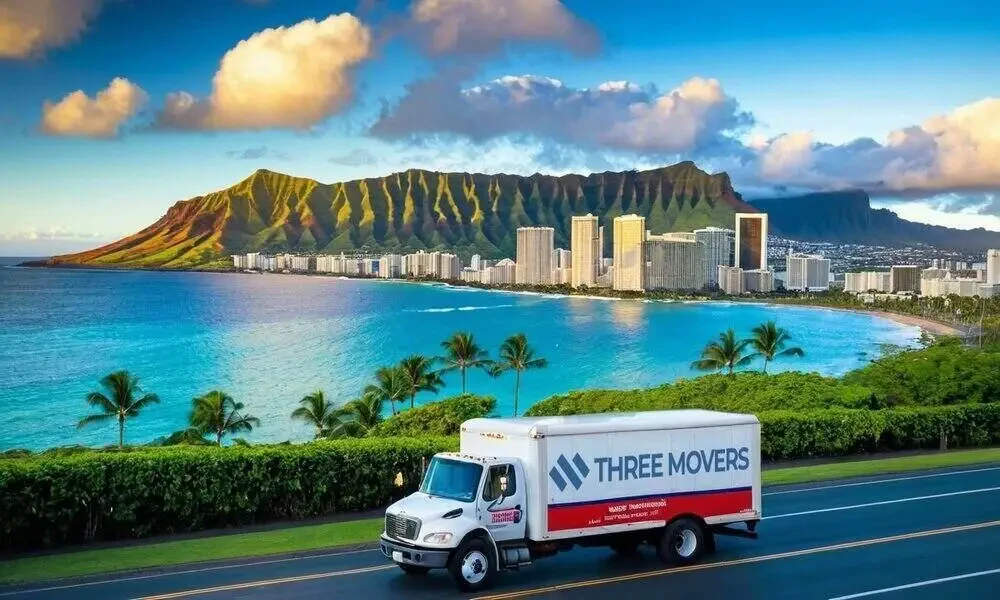
Auto Transport
Auto transport is an important service that is often offered with our long-distance and international hauling services. A large number of our customers don’t accompany the truck of our allied van lines to their new residence. They take flights to their new home.
And with our auto transport services, we can help transport their vehicles to their new residence. The auto transport industry is thriving. Three Movers collaborates with some of the leading players in the industry to offer auto transport services. Our services help our customers.
- Avoid delayed arrival time.
- Reducing moving costs
- Avoid unnecessary risks like road accidents

Should I choose full-service movers or rent a truck and move myself?
Whether you should choose Hawaiian full-service movers or rent a truck and move yourself depends on several factors, including your budget, your time constraints, and your level of comfort with moving.
Full-service movers
Pros:
- They can handle all aspects of your move, from packing and loading to unloading and unpacking.
- They have the experience and expertise to move your belongings safely and efficiently.
- They are insured against damage or loss.
- They can save you a lot of time and stress.
Cons:
- They are typically more expensive than renting a truck and moving yourself.
- You may need to coordinate with multiple companies if your move involves shipping your belongings to or from Hawaii.
- You may have a longer ETA if the company groups shipments.
- Storage options may be scarce, expensive, or unavailable.
- Highest-contact option: Movers will be in your home and touching your things.
Renting a truck and moving yourself
Pros:
- It is typically less expensive than hiring full-service movers.
- You have more control over the moving process and the schedule.
- You can save money by packing and unpacking yourself.
- You can avoid the hassle of coordinating with multiple companies.
Cons:
- You must do all the work, including packing, loading, unloading, and unpacking.
- It can be physically demanding and time-consuming.
- You are responsible for any damage or loss to your belongings.
- You may need to ask friends and family for help.
Which option is right for you?
If you are on a tight budget and are okay with doing the work yourself, renting a truck and moving yourself may be the best option. However, hiring full-service movers may be better if you need more time, value convenience, or have a lot of belongings to move.

Should I hire commercial companies, or will any carrying company work?
Whether or not you should hire a commercial hauling company depends on a few factors, including the size and complexity of your move, your budget, and your timeline.
If you are relocating a large or complex business, hiring a commercial company with experience with moves of that size and scope is generally recommended. This is especially true if you are moving to or from Hawaii, as some unique challenges are associated with moving to and from an island.
For example, Hawaiian commercial moving companies will be familiar with the local regulations and requirements for moving large or specialized items, such as office equipment or IT infrastructure. They will also be able to help you coordinate with transportation companies and other vendors to ensure that your move goes smoothly.
However, if you are shifting a small business or a single office, you can save money by hiring a general moving company. Just be sure to research and choose a company with a good reputation and experience with commercial moves.
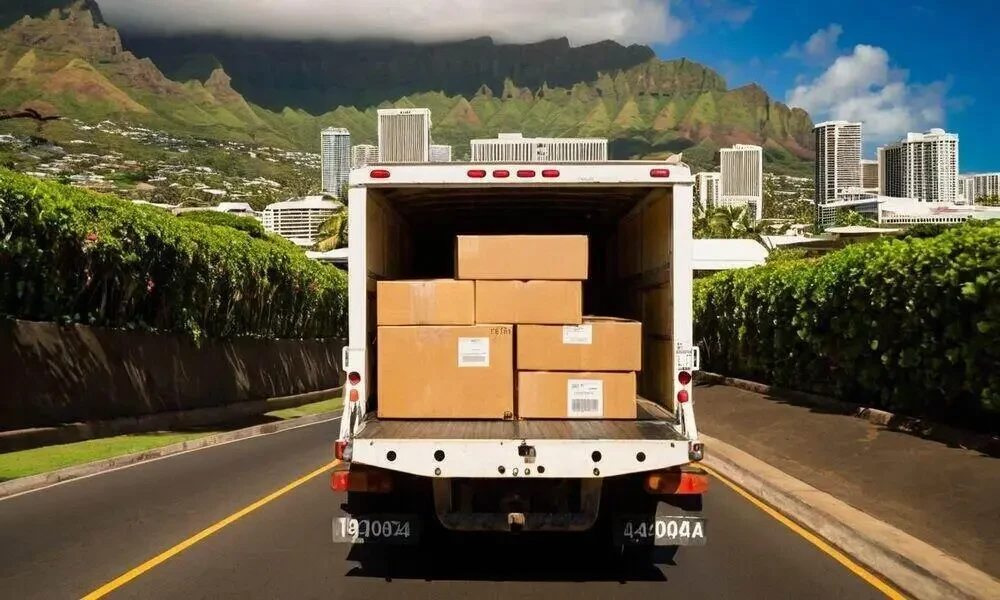
Why should I work with local shifting companies?
There are several reasons why you should consider working with local moving companies when moving to, from, or within the islands:
- Local knowledge and expertise. Local movers have the knowledge and expertise to navigate the unique challenges of moving in Hawaii, such as narrow roads, steep hills, and long distances between islands. They also know the best way to pack and transport your belongings to ensure they arrive safely and on time.
- Customer service. Local movers are typically more customer-oriented than larger national chains. They take the time to understand your individual needs and create a moving plan that's right for you. They also tend to be more flexible and accommodating regarding scheduling and pricing.
- Supporting the local economy. When you work with a hauling company, you support the local economy and create jobs in your community.
- Competitive rates. Companies are often more cheaper than national chains, especially for short-distance moves.
- Flexible scheduling. Local movers are more likely to be flexible with scheduling, especially if you need to move on short notice or a weekend.
- Personalized service. Haulers are more likely to take the time to get to know you and your needs, and they are more likely to go the extra mile to make your move as smooth and stress-free as possible.
If you're looking for a moving company that will provide you with the best possible service and experience, we highly recommend working with a local Hawaiian moving company.
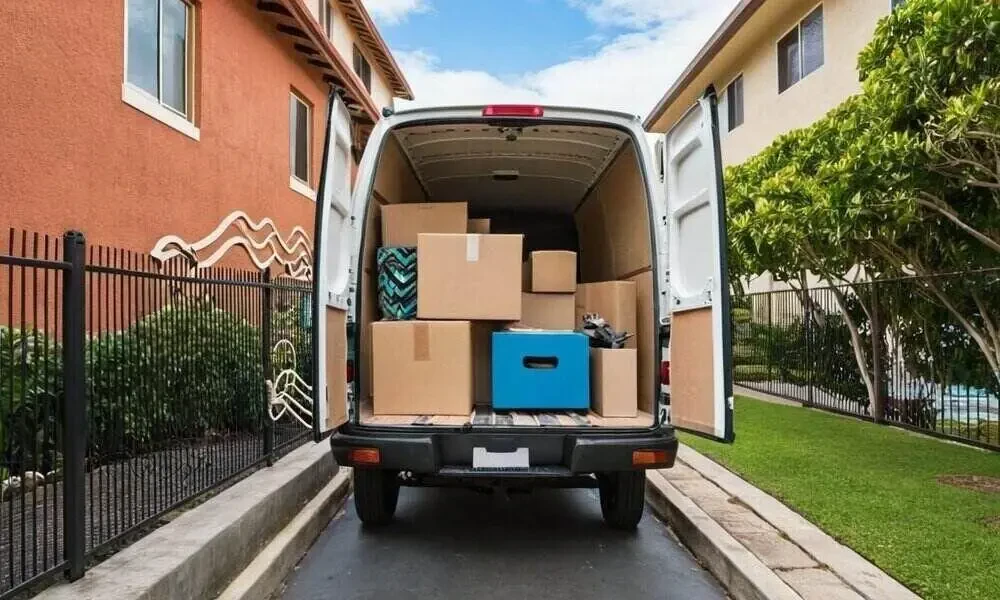
How much does it cost to hire a hauling specialist?
The cost varies depending on several factors, including the size of your move, the distance you are moving, the time of year, and the services you choose. However, you can expect to pay between $500 and $10,000 for a local move and between $1,500 and $12,000 for a long-distance move.
Here are some of the factors that can affect the cost of your move:
- Size of your move: The more belongings you have, the more expensive your move will be.
- Distance you are moving: Local moves are typically less expensive than long-distance moves.
- Time of year: Moving during the summer is typically more expensive, as this is the busiest time for movers.
- Services you choose: Some moving companies offer additional services, such as packing, unpacking, and storage. These services can add to the overall cost of your move.
To get an accurate estimate of the cost of your move, it is important to get quotes from multiple moving companies. Be sure to ask about all of the services included in the quote and any additional fees that may apply.

How do I check if a company is licensed or not?
Here are a few tips for checking if a company is licensed to operate in Hawaii:
- Ask the company directly if they are licensed in Hawaii. Reputable movers should be fine by providing their license number or proof of being properly registered with the state.
- Check the company's website or other marketing materials for mentions of being licensed. This information is often prominently displayed.
- Search the online database of the Hawaii Department of Commerce and Consumer Affairs (DCCA). The DCCA regulates and licenses various businesses in Hawaii, including movers. You can search for a company by name to see if it holds an active household goods mover license.
- Look up the company on the Better Business Bureau (BBB) website. The BBB assigns letter grades and provides information on business complaints and reviews. See if the company has a local presence and check their rating.
- Ask for references from past customers. A legitimate mover should be able to provide references for local moves they have completed.
- Confirm they have a local address and phone number. Licensed movers in Hawaii need a physical location within the state.
- Require them to provide their license number before booking. Reputable companies will readily provide this; scammers will refuse or make excuses.
A thorough check beforehand ensures you choose a licensed and vetted moving company for your Hawaii move. Let me know if you need any other tips!
What day is the cheapest to hire movers?
The cheapest day to hire movers in Hawaii is Monday. Movers are typically busiest on weekends and holidays, so they charge higher rates on those days. Weekdays are less popular for moving, so movers are more willing to negotiate on price.

How many people do I need for my move?
If you have a small home or apartment and only a few furniture items, you may get away with hiring two movers. However, if you have a large home or a lot of belongings, you may need to hire three or four movers.
If you are moving long-distance, consider hiring a company specializing in long-distance moves. These companies will have the experience and expertise to transport your belongings to Hawaii safely.
Finally, the level of service you want will also affect how many movers you need. If you want the movers to pack, load, and unload your belongings, you will need to hire more movers than if you are just hiring them to move your belongings.
What factors affect the cost?
- Distance: The distance from your current location to Hawaii is significant. Longer distance leads to higher shipping costs.
- Weight and Volume of Goods: The more items you have to move, the more you'll have to pay. Large or heavy items may attract additional fees.
- Type of Shipment: The type of shipment you choose for your move can significantly impact the price. Options can vary from air to sea freight, with sea freight typically being the cheaper but slower option.
- Time of the Year: Similar to other services, prices can fluctuate depending on the time of year. High season (typically summer months) may have higher prices due to demand.
- Packing Services: If you choose to have your moving company pack and unpack your belongings for you, this will add to the total cost of your move.
- Insurance: Adding insurance to your move will also add to the overall cost. This is to cover the cost of items in case they get lost or damaged during transit.
- Special Items: If you’re moving possessions like antiques, pianos, cars, or other special items, this may add to your moving costs as these items need special care or procedures.
- Storage: If you need storage in transit or at your destination, this will also increase your moving cost.
- Access: Difficult access to your old or new home, requiring shuttles or long carries, can add to your expenses.
- Customs: Depending on what you’re bringing, customs and quarantine fees may be associated with your move.
Additional Services: Any additional services, such as furniture disassembly or assembly, appliance disconnect and reconnect, etc., will add to the overall moving cost.

How Do I Contact Three Movers?
Call us on (888)202-0036 and get a free quote at no cost at any time of the day. You can also visit our website and get comprehensive and detailed information about the service we gladly offer our customers. We are always available to our customers. You can also call to inquire more about the charging rates and how they are adjusted according to the customer's requirements and the kind of task to be performed, as well as aspects used to reach a specific quotation.
Get A Quote To Move
Contact an agent by filling out the fast quote form and get your next move started today!
Get a Quote (888) 202-0036
Cost & Time Examples For Relocating
| To / From Hawaii | Distance | 2 BR | 3 BR | 4 BR |
|---|---|---|---|---|
| Hawaii, HI to Houston, TX | 359 miles | $2,516 - $3,134 | $3,685 - $4,860 | $4,860 - $6,995 |
| City Limits to Schiller Park, IL | 605 miles | $2,847 - $3,567 | $4,208 - $5,574 | $5,574 - $8,068 |
| Local Area to El Paso, TX | 888 miles | $3,254 - $4,095 | $4,843 - $6,435 | $6,435 - $9,348 |
| Hawaii, HI to Denver, CO | 869 miles | $3,278 - $4,127 | $4,883 - $6,491 | $6,491 - $9,435 |
| The Area to Nashville, TN | 308 miles | $2,438 - $3,032 | $3,561 - $4,692 | $4,692 - $6,744 |
| Los Angeles, CA to Local Area | 1545 miles | $4,012 - $5,084 | $6,037 - $8,062 | $8,062 - $11,784 |
| Melvindale, MI to Hawaii, HI | 742 miles | $3,063 - $3,847 | $4,546 - $6,033 | $6,033 - $8,751 |
| Bethany, OK, to Local Delivery | 386 miles | $2,437 - $3,031 | $3,560 - $4,690 | $4,690 - $6,741 |
| Yonkers, NY to Hawaii, HI | 1078 miles | $3,591 - $4,538 | $5,383 - $7,175 | $7,175 - $10,470 |
| Louisville, KY to Local Area | 445 miles | $2,603 - $3,248 | $3,822 - $5,048 | $5,048 - $7,278 |
*Prices and times are estimated. They can vary depending on the season and other factors. Get a quote

Are You Ready To Work With Us?
Fill out our simple form and get your free quote in a matter of minutes. custom-tailored to you.
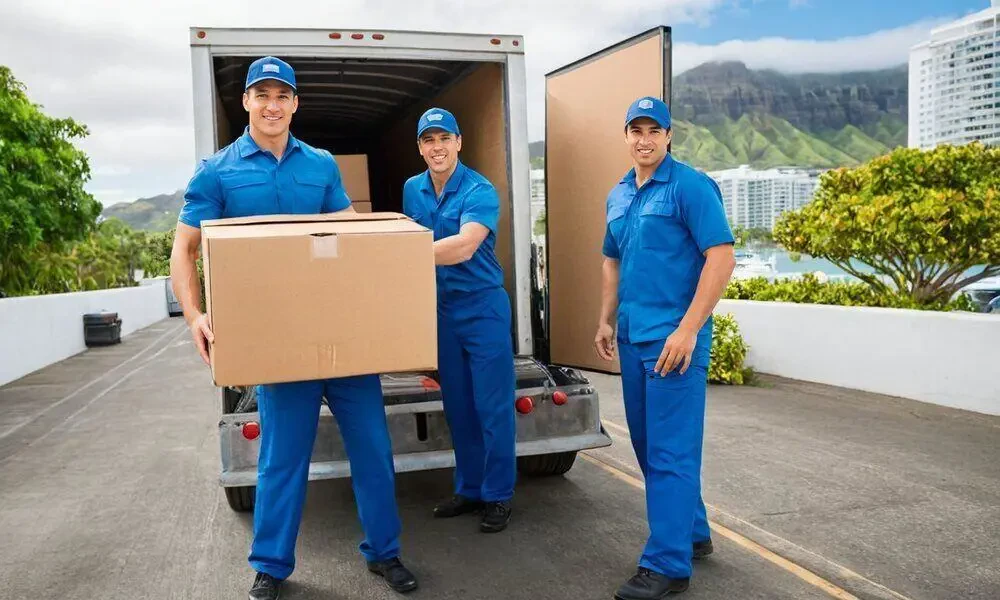
Resources on Moving Companies
- State of Hawaii
- usa.gov/moving
- Protect Your Move
- Travel and Immigration
- Government of Hawaii

Frequently Asked Questions
Online or phone estimates for Hawaii moves are typically 85–95% accurate, depending on inventory details and distance. A final written quote is issued after an in-home or virtual inspection to meet FMCSA accuracy standards. Factors like shipment size, ferry or inter-island transport, stairs, and access distance can affect the total. For more details, see our moving estimate process.
Yes. Same-day or next-day moves are available depending on crew availability and transport timing between islands. Costs can rise during peak months (May–August) or when booking within 24 hours. Crew size, load volume, and access conditions (condos, elevators, limited parking) determine feasibility. Learn more about our same-day movers and rapid-response options.
The least expensive months for moving in Hawaii are October through February, when inter-island shipping and labor demand drop. Book 2–4 weeks ahead for local and 4–6 weeks for long-distance or mainland moves. Avoid peak summer and early-year tourism surges that strain ports and trucking schedules. Plan early to secure your preferred delivery window.
Moving carriers operating within Hawaii are licensed by the Hawaii Public Utilities Commission (PUC), while interstate movers fall under the FMCSA (USDOT). Always verify the mover’s PUC certificate for intrastate or USDOT number for mainland deliveries. Consumers can confirm licenses at FMCSA.gov.
Yes. Movers prohibit hazardous, flammable, or perishable goods such as propane tanks, motor oil, paint, aerosols, fertilizers, fireworks, or live plants. These restrictions follow FMCSA safety regulations. Always disclose special items like scuba tanks or lithium batteries before pickup to prevent shipment delays or penalties.
Use marine-grade packing materials for sea transit, label boxes clearly, and seal against moisture. Declutter before shipping to reduce weight. Pack fragile or high-value items separately and notify your movers for custom handling. Our packing and unpacking service can handle all supplies and crating for long-distance or island relocations.
You can purchase boxes and packing materials through local retailers or request professional-grade supplies directly from your mover. Many full-service movers include delivery of boxes, wrapping, and labeling materials. Read our guide to where to buy moving boxes for reliable Hawaii options.
Prices depend on distance (local vs. inter-island), shipment weight, crew size, ferry fees, and timing. Local moves generally range $120–$200 per hour for 2–3 movers, while interstate or mainland shipments can cost $2,500–$6,000 depending on container size and transport mode. Compare options through our long distance moving service.
Yes. Many Hawaii moving companies provide short-term or long-term storage, ideal for customers awaiting shipping schedules or condo availability. Storage facilities are climate-controlled and secure, with flexible access times. You can explore our moving storage solutions for complete details.
Yes. We coordinate inter-island moving through certified freight partners, handling transport between Oahu, Maui, Kauai, and the Big Island. Moves typically complete within 3–7 days, depending on ferry schedules and weather. This includes household goods, vehicles, and office equipment under our full service movers in Honolulu.


